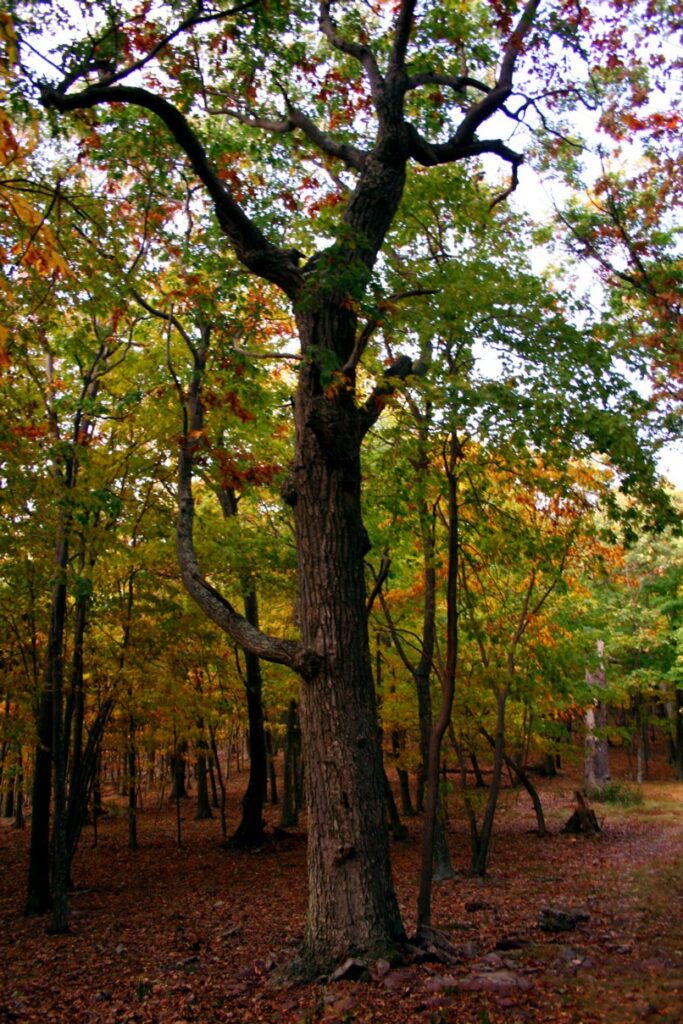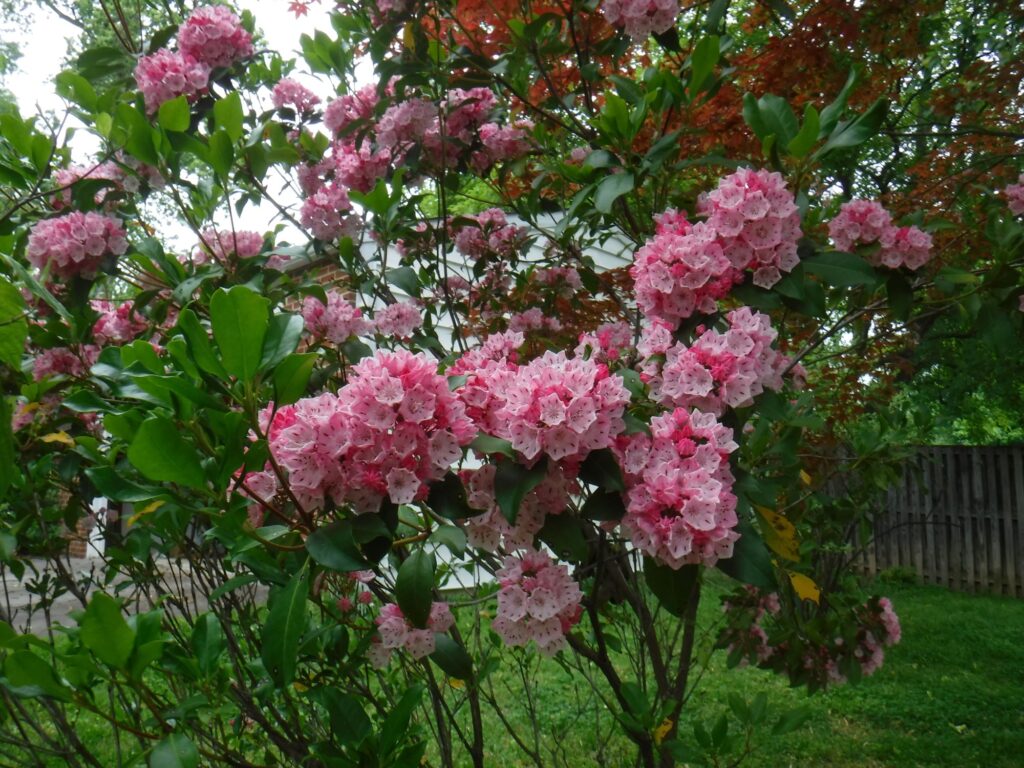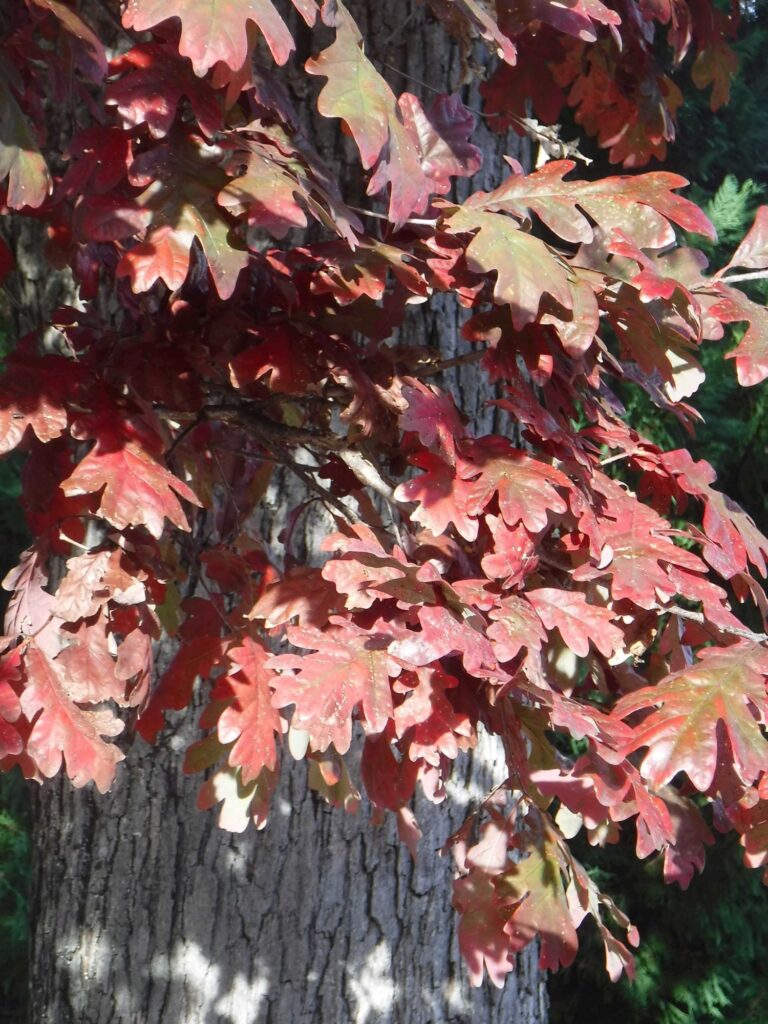The 2023 USDA APHIS risk assessment (PRA) seeks to analyze the possibility that the pathogen will invade and damage forests outside of California and Oregon – especially the deciduous forests of the East.
Is this study preparation for ending federal regulation of this pathogen through the nursery trade? If so, I think this study warrants particularly careful scrutiny. I raise questions about the study’s assumptions and the admitted uncertainties affecting several critical issues.
Managing Phytophthora ramorum – the causal agent of sudden oak death and ramorum blight – has proved to be difficult. It has demanded considerable resources over more than 20 years. I certainly agree that APHIS should focus on real risks. However, I am not satisfied that this risk assessment sufficiently evaluates the risk posed by P. ramorum.
APHIS considers the risk assessment to be final now, after receiving comments from state phytosanitary agencies – via the National Plant Board – and the U.S. Forest Service. APHIS is not seeking additional input. This is unfortunate given the unanswered questions and notable gaps in the study. (Details below.) Also, the agency has drafted an implementation plan, which staff hope to issue in the coming months. (Congress’ failure to complete Fiscal Year 2024 appropriations, and continuing disagreements about how to proceed, will probably delay this.)
The Risk Assessment’s Major Conclusions
The APHIS assessment concludes that Phytophthora ramorum probably will not cause significant disease in forests outside of California and Oregon. This is because the infective stage of P. ramorum and the susceptible stage of the host complex do not occur at the same time in eastern forests (as they do in the currently infected range). That is, the infectious agent is not present during the period when environmental conditions are favorable for infection, disease development, and spread.
1) Environmental stress, such as heat, decreases survival of P. ramorum inoculum.
2) As a result, inoculum does not build up sufficiently to produce significant disease.
3) The infectious stage of the P. ramorum (zoospore production) does not overlap long enough with the susceptible stage of the host or host complex for disease to develop.
The PRA concludes that while P. ramorum might survive in these environments, disease will not develop. Hosts will not become symptomatic “at a noticeable scale.” (page i of the PRA)

The authors also conclude that it is unlikely that repeated incursions of the pathogen or changes in climate conditions could increase inoculum pressure sufficiently to cause infection plus disease. The former is especially relevant because infected nursery plants have been shipped to eastern states repeatedly. The assessment lists at least 20 episodes since 2004 (Table 1). In total, P. ramorum has probably been moved more than a thousand times on nursery stock from California, Oregon, or possibly other states (or British Columbia).
The Risk Assessment notes three important sources of uncertainty that affect one or more of its major conclusions:
1) Little is known about the susceptibility and competency of host plant species in the eastern U.S. “Host competency” is the ability of a host species to transmit the infection to another susceptible host or to a vector. This is assessed by measuring pathogen sporulation, production of sporangia or zoospores on the various host species. (Discussed in greater detail below.)
2) Some climatic factors important for disease development cannot be reliably modeled for forest conditions. Until this changes, it seems to me that findings regarding infections and climate change are questionable.
3) A host range expansion due to the introduction or evolution of new clonal lineages might increase the adaptability of P. ramorum in the U.S. and potentially alter the consequences of introduction. Such shifts are definitely possible. In Europe, the EU1 clonal lineage has infected Japanese larch (Larix kaempferi). Both the EU1 and an additional strain of P. ramorum (NA2) have been established in the forests of Oregon for seven years, in California for a few years less. Establishment of the EU1 lineage also increases the chances for sexual reproduction, genetic recombination, and altered biology and epidemiology of this pathogen.
[Some scientists reached the opposite conclusion, although they did not delve as deeply into the climatic factors; instead they focused on host presence in wide climate ranges. See Haller and Wimberley 2020; full citation at end of this blog.]
Description of SOD’s Impact in the West
The PRA provides a decent summary of the history of Phytophthora ramorum in the U.S. It includes dates of detections; how the link was made between the disease and the newly discovered pathogen; its disease cycle; and the principal hosts in California and Oregon. It also documents the tens of millions of trees killed in California and Oregon, along with the resulting changes in forest composition and structure, threats to dependent wildlife species, and increasing fire risks. The study notes the threat to manzanita (Archtostaphylos). California is the center of diversity for the genus, and 59 out of the 105 species that inhabit the state are rare or endangered species.
APHIS: No disease in Eastern Forests Despite Frequent Exposure
As noted above, over the 25+ years since P. ramorum was first discovered in California (and later Oregon) forests and nurseries, infected plants have been shipped to nurseries throughout the country perhaps 1,000 times. Every one of these shipments was in violation of federal regulations conceived, adopted, and implemented by APHIS.
Despite the frequent arrival of P. ramorum-infected plants in nurseries, the less frequent planting of these plants in private and public gardens (many infected plants are destroyed once the infection is detected), and the persistence of detectable P. ramorum spores in streams in the southeastern states, the pathogen has not been detected causing disease in the environments of states other than California and Oregon. The PRA says these 20 years of experience indicate that development of significant disease is unlikely even if propagule pressure increases.
What Worries Me
The PRA states that APHIS scientists’ concept and evaluation of risk have “evolved.” The PRA does not explain this change explicitly; I would have appreciated a discussion of this change.
There is no evidence at present of sustained infectious outbreaks in the forests of the eastern states or Washington State. However …
- The PRA does not even summarize the dozens of known hosts native to eastern deciduous forests. Nor does it report findings of previous laboratory studies regarding the hosts’ capacity to sustain a disease epidemic. Instead, the PRA dismisses these studies with the statement “except for some eastern forest understory species [citing various studies by Paul Tooley and others], we do not have a good understanding of host transmission and susceptibility for tree and shrub species outside of California and Oregon. For this reason we do not include hosts in these maps.”
Since the purpose of the study is to evaluate the risk to those eastern forest species, shouldn’t the authors describe what is already known? Also, the risk assessment lacks an analysis of the gaps in our knowledge (beyond saying that research studies cannot be compared due to different methods).
- Furthermore, the risk assessment is never clear about which species in eastern forests the authors consider important. Are they concerned about the possible mortality only of canopy-sized oaks (Quercus spp.)? Do they consider the threat to shrubs and sub-canopy trees such as dogwood (Cornus spp.), sassafras (Sassafras albidum), andmountain laurel (Kalmia latifolia)? Or do they rate these species important only as possible drivers, not victims, of disease? (See below.)

- The PRA stresses the importance of climate in disease transmission – specifically relative humidity and the timing of rain events. In the Mediterranean climate of coastal California, this means ample rainfall and mild temperatures in late spring. The PRA provides no data documenting that timing is as critical in the cool and humid climate of Oregon and far northern coastal California, or the United Kingdom. These are the areas where P. ramorum has caused the most serious disease. Portions of the eastern deciduous forest – e.g., mid-elevations of the southern Appalachians – might more closely resemble humidity and temperature conditions of Oregon and Britain than central California. If so, timing might be less decisive a factor there, too.
Temperature is also important: P. ramorum thrives in regions with a 20°C difference between the minimum and maximum daily temperatures. The infectious stages are produced in a relatively narrow temperature range: sporangia between 16 and 22°C, zoospores between 20 and 30°C. The PRA says that after mild temperatures, the second most predictive factor varies by the genetic strain of the pathogen: for the NA1 and NA2 strains, it is minimum temperature of the driest month; for the EU1 strain, it is precipitation during the driest month.
The PRA concludes that areas in the East where temperatures are suitable for infection are rare – see Figure 5B in the document. However …
P. ramorum usually reproduces asexually. When temperature and humidity conditions are conducive, the P. ramorum mycelium produces zoospores which then spread the infection by swimming to new infection sites. Persistence of the crucial film of water on leaves depends on the microclimate of specific sites. Sites that are cooler and damper are present in many parts of the eastern forest, e.g., stream canyons, upper elevations, north-facing slopes. Several of the known or suspected hosts in the east, e.g., Kalmia and Rhododendron species and hemlocks, grow in such sites. Those who purchase plants of these genera often maintain outdoor plantings in or near such sites. Therefore, I continue to worry that conducive conditions might be present in nurseries and gardens of private homes in mountainous areas.
- The PRA concedes assessors had insufficient data at scales useful to model the risk associated with these microclimates, or to separate individual effects of temperature, rain, and leaf wetness on P. ramorum infection. I object to glossing over this ignorance. Absence of evidence is not equal to evidence of absence – especially when such iconic and valuable plants are involved.
The Risk Assessment concludes that eastern forests will frequently have inhospitable conditions. This will prevent development of enough spores to initiate widespread disease. However, P. ramorum survives as abundant chlamydospores during conditions such as hot summers, cold winters, and drought. These cells germinate when conditions become suitable. As I noted just above, important portions of eastern deciduous forests provide such conducive conditions – and APHIS says it is unable to model these microclimates.
P. ramorum can also survive in decomposing leaf litter in water. The pathogen has regularly been detected in nearly a dozen streams in southeastern states. In APHIS’ assessors’ opinion, the oomycete cells in these conditions are unlikely to produce sporangia and zoospores that can infect living host tissue. P. ramorum can’t complete its lifecycle without infecting a living plant and the chain of infection will break.
2. The PRA concedes considerable uncertainty associated with the possibility of sexual reproduction. While sexual reproduction has rarely occurred to date, this is probably because the two mating types have been located on two continents: isolates of the A1 mating type have been in only Europe until recently. The A2 isolates are in North America.
This barrier has now been breached. Since 2016 or earlier, a European strain of the A1 mating type (the EU1 lineage) has been established in Oregon and – more recently – in California, near populations of the North American A2 mating type (NA1). The NA2 lineage is also established in Oregon’s forest. The EU1 genotype produces prolific spores in Europe and has the potential to be more aggressive than either North American strain (NA1 and NA2). The presence of EU1 introduces the possibility for sexual reproduction through crossing with the NA1 or NA2 lineages. Indeed, an EU1 – NA2 hybrid has been discovered in a Canadian nursery (that outbreak has reportedly been eradicated). The EU1 strain is currently restricted to western forests. However, it might spread to nurseries, which seem likely to ship EU1-infected plants to eastern states.
Additional genetic variation is probable through introduction of yet more strains, given the failure of current phytosanitary measure to prevent continuing introductions of the pathogen. Scientists recently discovered eight additional strains of P. ramorum in Southeast Asia [the PRA cites Jung et al., 2021]. Each strain represents different adaptations and presents the opportunity for sexual reproduction that might facilitate adaptation to new conditions. The Vietnamese P. ramorum strains are found at high elevations. In the central highlands, at least, rainfall occurs primarily in the summer (the opposite pattern from California). The average annual temperature is 21 to 23°C (70 to 73°F). Winter mean temperatures can fall below 20°C (68oF). I believe the PRA should have discussed how these climatic attributes compare to parts of the eastern U.S. that could be at risk.
Finally, the PRA notes that asexual populations of P. ramorum can “jump” hosts, e.g., EU1 and EU2 in Europe now attack Japanese larch. The EU1 strain in Oregon is infecting grand fir (Abies grandis) and Douglas-fir (Pseudotsuga menziesii) and can occur in the right environmental conditions. The assessment does not discuss the level of disease on these conifers. Perhaps it is too early in the disease progression to know, but the prospects are worrying.
3. As this Risk Assessment notes, in California and Oregon only some hosts contribute to disease spread by P. ramorum. In those states, transmissive hosts are California bay laurel (Umbellularia californica) and tanoak (Notholitocarpus densiflorus). These sporulating hosts drive the epidemic. The true oaks (Quercus spp.) are dead-end hosts – they develop lethal infections but do not contribute to disease spread. Tanoak is unique in being both a sporulating and a mortally vulnerable one. The study seems to assume that the disease will behave similarly in the East. That is, canopy-forming oaks and other trees will be killed but will not transmit infection. The assessment provides no basis for this assumption. I agree that transmissive hosts must be sufficiently tall to allow spores to spread to other hosts through downward rainfall or wind. Do we know that larger eastern oaks, are “dead-end” hosts?What happens if eastern conifers become infested? For example, eastern hemlocks? What about hosts that climb into the canopy, e.g., Japanese honeysuckle (Lonicera japonica)? The risk assessment does say that Rhododendron and Kalmia can reach heights comparable to California bay laurel and that in the United Kingdom disease is sustained by infected Rhododendron. I note that Rhododendron and Kalmia grow in high-elevation “balds” in the Appalachians – where spores could be picked up by wind-driven rain.
Several of the eastern hosts are already – or soon will be – threatened by other non-native pests. A little to the east of the Great Smokey Mountains dogwood’s density is now a fifth of the peak registered 30 years earlier. There is now almost no regeneration in most upland sites. Dogwood anthracnose is more virulent in cool, damp environments – microclimates most suitable for SOD. Hemlocks have been decimated by hemlock woolly adelgid, opening formerly cool, dark environments to more sunlight. Sassafras faces great losses to laurel wilt disease. These other non-native pests and pathogens might reduce the likelihood of P. ramorum encountering sporulating hosts. On the other hand, these existing threats raise the importance of protecting these hosts from impacts from yet another invasive species.

Most alarming is the fact that the PRA assessors admit they don’t understand how climatic conditions affect host susceptibility or which eastern forest species might be transmissive hosts. The absence of such call their assumptions and findings into question. An APHIS staffer reports that scientists are now working on these issues. I believe APHIS should have begun studying these issues years ago, given the frequency of the spread many pests via the nursery trade. At a minimum, they should not have published a risk assessment until these questions have been resolved.
Included among the topics the PRA says need additional research are issues underlying vulnerability of eastern forest species and ecosystems:
• Susceptibility and competency of the various host combinations in both eastern and western forests.
• Timing of inoculum production of the various host combinations in the potential host complexes, and whether timing of inoculum production overlaps with when hosts would be susceptible.
• Timing and duration of various climatic factors favorable for infection.
The document does not indicate whether APHIS has funded these research studies. We have only the brief personal statement by the APHIS program leader, above.
The PRA complains about the lack of quantifiable data on the consequences of ramorum blight in nurseries. After noting unmitigated presence of P. ramorum will damage leaves and cause shoot dieback and damping off (death) of young plants, the assessment concludes that scientists and managers understand nursery practices that are effective in mitigating P. ramorum and ramorum blight. However, the assessors are uncertain re: the extent to which nurseries already routinely apply these practices. I add: or will continue to do so if regulatory requirements are ended.
The authors say estimating environmental consequences in other parts of the country is difficult because susceptibility of eastern species remains unclear. This is especially the case with the possibility of P. ramorum infecting conifers and the increased likelihood of sexual reproduction – at least in the West. The study then concludes that unless conditions change, P. ramorum does not pose a high risk to the forests of the rest of the US. Given all these unknown, I consider this conclusion to be unwarranted.
Might the States Substitute for APHIS?
If APHIS ends its regulatory program for P. ramorum, states will be free to adopt their own regulations (see Porter and Robertson, 2011; and Fading Forests III, link at end of this blog). Under the best circumstances, states will coordinate such a response – as they did earlier for thousand cankers disease of walnut. However, the absence of a federal regulation will still raise the (already too high!) likelihood that infected plants will be shipped to eastern states.
SOURCES
Haller, D.J. and M.C. Wimberly. 2020. Estimating the Potential for Forest Degradation in the Eastern United States Woodlands from an Introduction of Sudden Oak Death. Forests 2020, 11, 1334; doi:10.3390/f11121334 www.mdpi.com/journal/forests
Porter, R.D. and N.C. Robertson. 2011. Tracking Implementation of the Special Need Request Process Under the Plant Protection Act. Environmental Law Reporter. 41.
Posted by Faith Campbell
We welcome comments that supplement or correct factual information, suggest new approaches, or promote thoughtful consideration. We post comments that disagree with us — but not those we judge to be not civil or inflammatory.
For a detailed discussion of the policies and practices that have allowed these pests to enter and spread – and that do not promote effective restoration strategies – review the Fading Forests report at http://treeimprovement.utk.edu/FadingForests.htm
or
